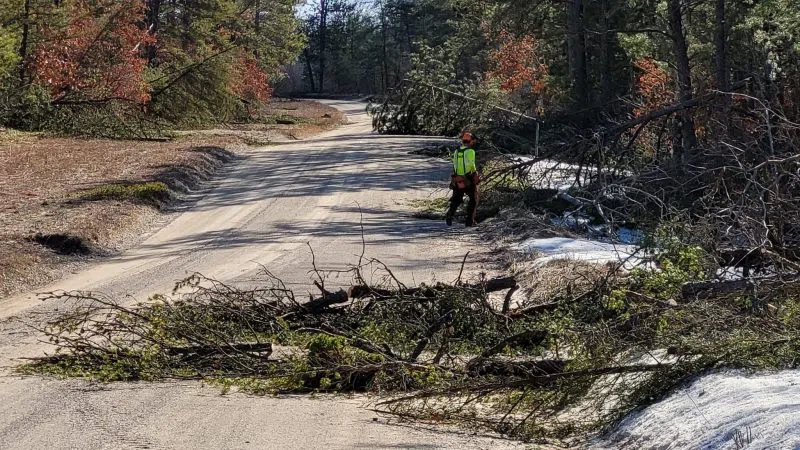It’s been a productive summer for the resident raptors at the Sault Ste. Marie International Bridge, with peregrine falcons successfully raising two chicks this year. One egg laid earlier this year did not hatch.
Karl Hansen, bridge engineer for the International Bridge Administration (IBA), reported on the pair of peregrine falcons that nested on the bridge between the U.S. and Canada. Nest boxes for the peregrines have been installed since 2010 on the International Bridge. Last year, the same pair of peregrine falcons hatched one chick. Over the years, the site has been a great success, hatching 32 falcon chicks since IBA staff started counting the birds, Hansen said.
The chicks, a male and a female, were banded by a Michigan Department of Natural Resources (MDNR) team on June 10. Color-coded bands attached to the legs of young birds allow scientists to track the movements, reproductive behavior and population growth of the falcons.
”The mother bird refused to leave the nest this year,” Hansen said. ”That was a first. The MDNR staff had to gently remove her to access the young birds.”
In addition to their leg bands, the peregrine chicks received names. The International Bridge staff named the male bird Tony and the female bird Franny.
An interesting illustration of how far the birds can range: one of the birds hatched and banded at the International Bridge was spotted and photographed in the Dominican Republic back in November 2020.
Several years ago, the IBA added a video camera trained on the nest box, the “FalCam.” The live video stream, which has become very popular, is viewable at www.saultbridge.com/falcam, offering bird watchers a front row seat for the seasonal activities of the endangered raptors. The best time to view the birds is when they’re nesting in the spring.
Michigan lost its peregrine falcons in the 1960s and 1970s due to the use of DDT and other environmental contaminants. Since conservation efforts started in the mid-1980s, the number of peregrines has fluctuated, but has generally increased since the 1990s, according to the MDNR.
The peregrine falcon has been removed from the federal endangered species list but is listed as an endangered species in Michigan, protected by state and federal law. Peregrines have adapted to city habitats, nesting on tall buildings, smokestacks and bridges around the world.
High-speed hunters capable of flying at 200 mph, the peregrines may help keep populations of nuisance pigeons under control. While researchers have found pigeons make up a relatively small portion of the falcon diet, the dangerous predators may play a role in frightening them away from bridges. Keeping pigeons away is seen as potentially saving the IBA maintenance money down the line, as pigeon droppings can damage paint on metal bridge surfaces.


























Comments